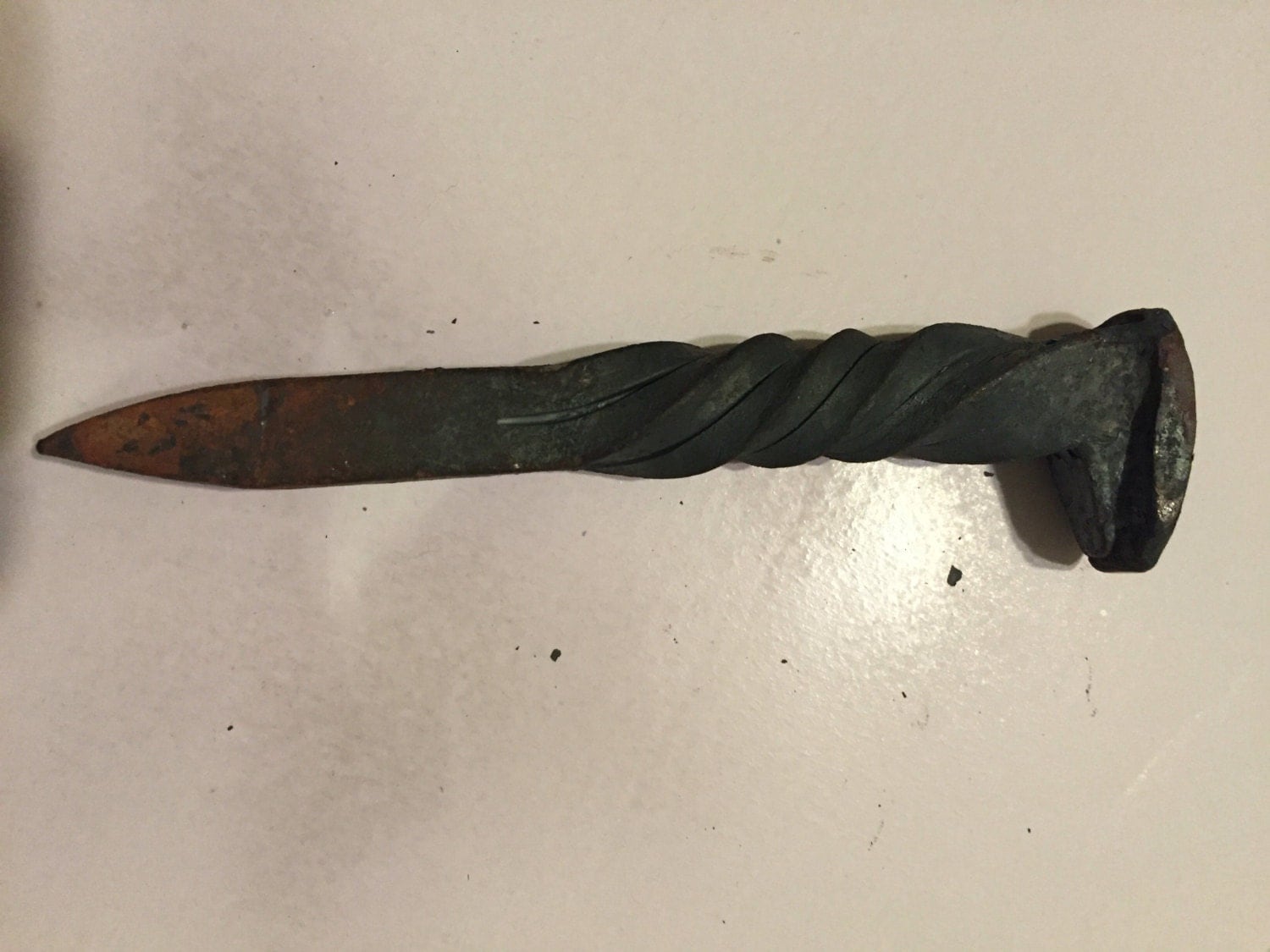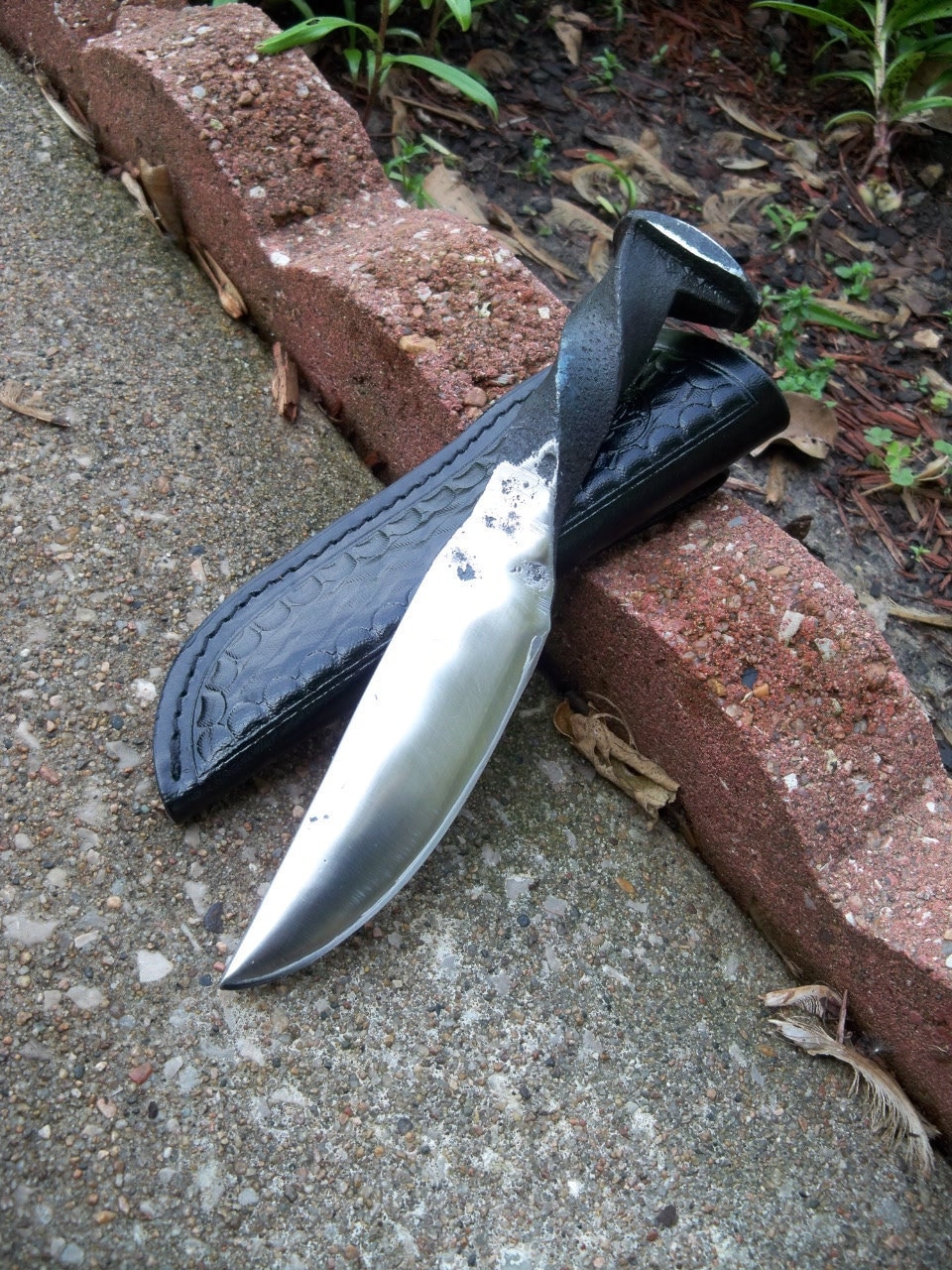

If you are using a file, consider a mill file, as it as an array of parallel cutting lines and not crosshatching. In the absence of a belt sander, a file is useful for both cleaning and shaping tasks. During this process, consider using a file to give the intended final shape. This is also how we switched hammers while forging. You can use the belts, starting with a heavy grit and then switching to medium grit.
#Railroad spike knife how to
You can then see how to hammer one side and then the other. Just keep restoring its shape along the centerline (visualize this).

Working it will twist it significantly, which is fine. This part of the tool where the blade shapes into the handle are known as the knife’s choil. Start by putting the spike on the anvil’s edge and hitting using the hammer such that the latter’s center is just at the anvil’s edge. This is where the blade becomes flattered and flickers into the handle. Now, it is time for half-face near hammering.Then, from the color, you will be able to decide when to put it back for more heating. During this, you will be able to feel the metal’s malleability. With a little bit of hammering, the shape of the knife becomes visible. You can now easily find out the side that will be the edge to be sharpened. In some time, you will see how the blade is shaping. Just hold the spike flat with the section where the edge of the blade will be up and then hammering the tip using an angle. You need to lean towards one side, as the spine is thicker than the blade. Avoid hammering directly flat, as flattening it even is not the exact goal. For flattening the blade end, you need to perform evenly on both sides. This will include heating several times in the forge. Make the tip as thin and long as possible. For making the tip, you heat it and strike all four sides uniformly. Start by hammering and flattening the initial 1/3rd of the shaft’s length, measuring from the point back’s tip. Shape the Blade and Tip: Once the spike is heated well, give it a few hits using a heavy hammer, such as the one weighing 3.5 pounds.
#Railroad spike knife full
Clamp the head and hold your wrenches to give the desired number of twists (half or full rotations). The head’s elongated edge should be pointing in the same direction as the finished blade’s sharp edge. Now, hold the spike with metallic tongs and keep it on the anvil such that the head is positioned properly. Heat until you get the red/orange hot look. Do not be bothered about the spike’s butt, as you will not be working with that section. A charcoal fire with instituted air is enough. You can do so in a forge or working furnace. Heat the Spike Evenly: Now, the forging procedure starts from here.


 0 kommentar(er)
0 kommentar(er)
